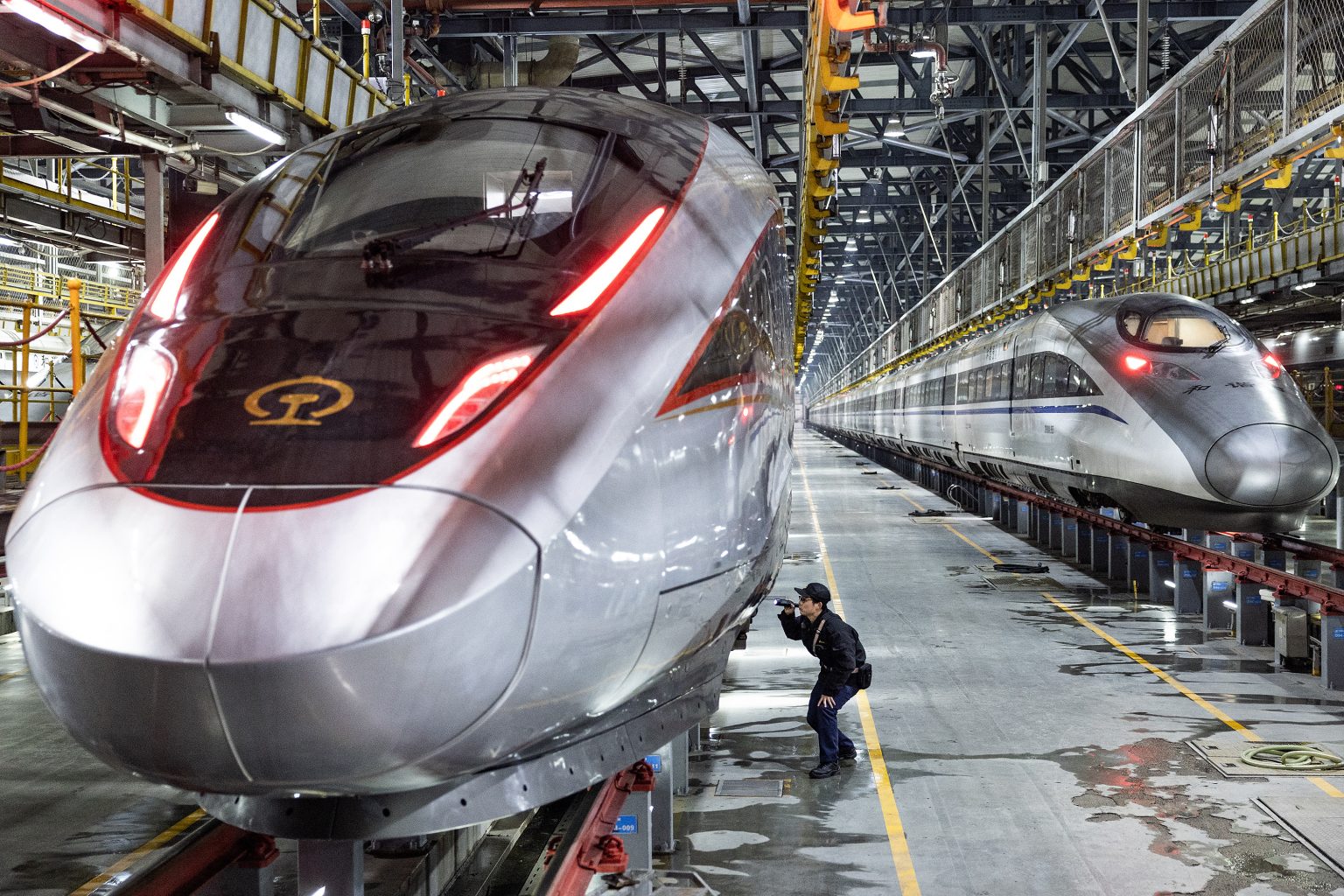Serbian President Aleksandar Vucic praised a Chinese company involved in the construction of a high-speed rail line connecting Belgrade to Budapest, Hungary, as “a miracle” during the unveiling of a new high-speed train in Belgrade. The project is part of China’s Belt and Road Initiative in Europe, aimed at developing infrastructure across parts of Asia, east Africa, and Eastern Europe to increase Beijing’s influence. China has been strengthening ties with Serbia and Hungary, both of which enjoy warm relations with Russia, China’s main ally. The train unveiled in Belgrade can reach speeds of up to 200 kilometers per hour and has 250 seats.
Vucic announced that Serbia had ordered five trains from the China Railway Rolling Stock Corporation for use on the Belgrade-Budapest railway, currently under construction. He expressed hope that Serbia would eventually be able to build its own trains, emphasizing the importance of this for the country’s growth. Chinese constructors have already completed a rail line between Belgrade and Novi Sad, with plans to extend it to Subotica near the Hungarian border by December. The Belgrade-Budapest railway, involving various Chinese companies in its construction, is set to be 217 miles long once finished.
China’s high-speed rail network, with over 25,000 miles of track in 2021, saw 2.3 billion individual journeys in 2019, comprising 63 percent of all passenger rail travel in the country. The recent years have seen a resurgence in plans for high-speed railways, including the construction of a line connecting Las Vegas to southern California, endorsed by President Joe Biden. There are also proposals for a high-speed line between Houston and Dallas in Texas, as well as one linking Dallas to Fort Worth. The Chinese government’s Belt and Road Initiative aims to develop infrastructure across Asia, east Africa, and Eastern Europe to enhance Beijing’s influence.
President Vucic commended the China Communications Construction Company (CCCC) for their work on the railway line, calling them a “miracle” and praising their efforts in Serbia. He expressed optimism for the completion of the Belgrade-Subotica line by December, and highlighted the importance of building domestic trains in Serbia for the country’s development. With plans to test the trains on the Belgrade-Subotica line by September and travel between Belgrade and Subotica by December, Serbia is moving forward with its high-speed rail network. The cooperation between Serbia and China on the railway project demonstrates the strengthening ties between the two countries and the potential for further infrastructure development in the region.
The Belgrade-Budapest railway project, involving multiple Chinese companies, is a significant step in enhancing transportation infrastructure in the region. The high-speed train unveiled in Belgrade showcases the progress made in the construction of the railway line and the potential for improved connectivity between Serbia and Hungary. With plans to extend the rail line to Subotica and eventually Budapest, Serbia is working towards enhancing its transportation network and promoting economic growth. The involvement of Chinese companies in the project highlights the close cooperation between China and Serbia in infrastructure development, and the potential for further collaboration in the future.


